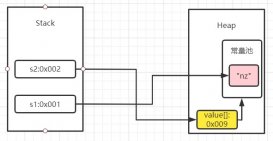因?yàn)轫?xiàng)目需要,頁(yè)面上需要樹(shù)形結(jié)構(gòu)的數(shù)據(jù)進(jìn)行展示(類(lèi)似下圖這樣),因此需要后端返回相應(yīng)格式的數(shù)據(jù)。

不說(shuō)廢話,直接開(kāi)干!!!
我這里用的是springboot+mybatis-plus+mysql,示例的接口是查詢(xún)一級(jí)權(quán)限以及二級(jí)權(quán)限、三級(jí)權(quán)限整個(gè)權(quán)限樹(shù)…
下面是導(dǎo)入的maven依賴(lài)
|
1
2
3
4
5
6
7
8
9
10
11
12
13
14
15
16
17
18
19
20
21
22
23
24
25
26
27
28
29
30
31
|
<dependency> <groupId>org.springframework.boot</groupId> <artifactId>spring-boot-starter-web</artifactId> </dependency><!--數(shù)據(jù)庫(kù)連接--> <dependency> <groupId>com.alibaba</groupId> <artifactId>druid-spring-boot-starter</artifactId> <version>1.1.21</version> </dependency> <dependency> <groupId>mysql</groupId> <artifactId>mysql-connector-java</artifactId> </dependency> <!--mybatis增強(qiáng)工具--> <dependency> <groupId>com.baomidou</groupId> <artifactId>mybatis-plus-boot-starter</artifactId> <version>3.4.0</version> </dependency> <dependency> <groupId>org.projectlombok</groupId> <artifactId>lombok</artifactId> <optional>true</optional> </dependency> <dependency> <groupId>cn.hutool</groupId> <artifactId>hutool-all</artifactId> <version>5.0.6</version> </dependency> |
下面是實(shí)體類(lèi)Permission
|
1
2
3
4
5
6
7
8
9
10
11
12
13
14
15
16
17
18
19
20
21
22
23
24
25
26
27
28
29
30
31
32
33
34
35
36
37
38
39
40
41
42
43
44
45
46
|
@Datapublic class Permission implements Serializable { @TableId private String permissionId; @NotNull(message = "權(quán)限名稱(chēng)不能為空") private String permissionName; /** * 權(quán)限標(biāo)識(shí) */ @NotNull(message = "權(quán)限標(biāo)識(shí)不能為空") private String permissionCode; /** * 父菜單ID,如果是-1就表示是一級(jí)權(quán)限菜單。 */ @NotBlank(message = "父菜單ID不能為空") private String parentId; /** * 前端URL訪問(wèn)接口路徑 */ private String path; /** * 排序值 */ private Integer sort; /** * 創(chuàng)建時(shí)間 */ private LocalDateTime createTime; /** * 更新時(shí)間 */ private LocalDateTime updateTime; /** * 0--正常 1--刪除 */ private String delFlag; public Permission() { this.permissionId = IdUtil.simpleUUID(); } |
樹(shù)形結(jié)點(diǎn)類(lèi)
|
1
2
3
4
5
6
7
8
9
10
11
|
@Datapublic class TreeNode { protected String id; protected String parentId; protected List<TreeNode> children = new ArrayList<TreeNode>(); protected boolean hasChildren; public void addTreeNode(TreeNode node){ children.add(node); }} |
樹(shù)形結(jié)點(diǎn)詳細(xì)信息類(lèi)
|
1
2
3
4
5
6
7
8
9
10
11
12
|
@Data@EqualsAndHashCode(callSuper = true)public class PermissionTree extends TreeNode implements Serializable { private String permissionName; private String permissionCode; private String path; private Integer sort; private String label; private boolean hasChildren; public PermissionTree() { }} |
構(gòu)建樹(shù)形結(jié)點(diǎn)工具類(lèi)(關(guān)鍵),在這里我用@UtilityClass注解就表示這個(gè)類(lèi)中的方法都是靜態(tài)方法:
|
1
2
3
4
5
6
7
8
9
10
11
12
13
14
15
16
17
18
19
20
21
22
23
24
25
26
27
28
29
30
31
32
33
34
35
36
37
38
39
40
41
42
43
44
45
46
47
48
49
|
@UtilityClasspublic class TreeUtil { public <T extends TreeNode> List<T> build(List<T> treeNodes, String root) { List<T> trees = new ArrayList<>(); for (T treeNode : treeNodes) { if (root.equals(treeNode.getParentId())) { trees.add(treeNode); } for (T node : treeNodes) { if (node.getParentId().equals(treeNode.getId())) { treeNode.addTreeNode(node); treeNode.setHasChildren(true); } } } return trees; } /** * 通過(guò)permission創(chuàng)建樹(shù)形節(jié)點(diǎn) * * @param permissionList * @param root * @return */ public List<PermissionTree> buildTree(List<Permission> permissionList, String root) { System.out.println(Arrays.toString(permissionList.toArray())); List<PermissionTree> treeNodeList = new ArrayList<>(); PermissionTree treeNode = null; for (Permission permission : permissionList) { treeNode = new PermissionTree(); treeNode.setId(permission.getPermissionId()); treeNode.setPermissionName(permission.getPermissionName()); treeNode.setPath(permission.getPath()); treeNode.setSort(permission.getSort()); treeNode.setParentId(permission.getParentId()); treeNode.setLabel(permission.getPermissionName()); treeNode.setHasChildren(false); treeNodeList.add(treeNode); } return TreeUtil.build(treeNodeList, root); } } |
響應(yīng)消息主體類(lèi)
|
1
2
3
4
5
6
7
8
9
10
11
12
13
14
15
16
17
18
19
20
21
22
23
24
25
26
27
28
29
30
31
32
33
34
35
36
37
38
39
40
41
42
43
44
45
46
47
48
49
50
51
52
53
54
55
56
57
58
59
60
61
62
63
64
65
66
67
68
69
70
71
72
73
74
75
76
77
78
79
|
/** * 響應(yīng)信息主體 * * @param <T> */@ToString@NoArgsConstructor@AllArgsConstructor@Accessors(chain = true)public class R<T> implements Serializable { private static final long serialVersionUID = 1L; private int code; private String msg; private T data; public int getCode() { return code; } public void setCode(int code) { this.code = code; } public String getMsg() { return msg; } public void setMsg(String msg) { this.msg = msg; } public T getData() { return data; } public void setData(T data) { this.data = data; } public static <T> R<T> ok() { return restResult(null, CommonConstants.SUCCESS, CommonConstants.MSG_SUCCESS); } public static <T> R<T> ok(T data) { return restResult(data, CommonConstants.SUCCESS, CommonConstants.MSG_SUCCESS); } public static <T> R<T> ok(T data, String msg) { return restResult(data, CommonConstants.SUCCESS, msg); } public static <T> R<T> failed() { return restResult(null, CommonConstants.FAIL, null); } public static <T> R<T> failed(String msg) { return restResult(null, CommonConstants.FAIL, msg); } public static <T> R<T> failed(T data) { return restResult(data, CommonConstants.FAIL, null); } public static <T> R<T> failed(T data, String msg) { return restResult(data, CommonConstants.FAIL, msg); } private static <T> R<T> restResult(T data, int code, String msg) { R<T> apiResult = new R<>(); apiResult.setCode(code); apiResult.setData(data); apiResult.setMsg(msg); return apiResult; }} |
數(shù)據(jù)查詢(xún)接口mapper類(lèi)
|
1
2
3
4
|
@Mapperpublic interface PermissionMapper extends BaseMapper<Permission>{ } |
數(shù)據(jù)邏輯處理業(yè)務(wù)接口
|
1
2
3
4
5
6
7
8
9
10
11
12
|
public interface PermissionService extends IService<Permission> { /** * 構(gòu)建權(quán)限樹(shù) * * @param lazy * @param parentId * @return */ List<PermissionTree> treePermission(boolean lazy, String parentId);} |
數(shù)據(jù)邏輯處理業(yè)務(wù)接口實(shí)現(xiàn)類(lèi)
|
1
2
3
4
5
6
7
8
9
10
11
12
13
14
15
16
17
18
19
20
21
22
23
24
25
|
@Servicepublic class PermissionServiceImpl extends ServiceImpl<PermissionMapper, Permission> implements PermissionService {/** * 構(gòu)建權(quán)限樹(shù):1、不是懶加載情況,查詢(xún)?nèi)?/code> * 2、是懶加載,根據(jù)parentId查詢(xún) * * @param lazy * @param parentId * @return */ @Override public List<PermissionTree> treePermission(boolean lazy, String parentId) { if (!lazy) { return TreeUtil.buildTree( baseMapper.selectList(Wrappers.<Permission>lambdaQuery().orderByAsc(Permission::getSort)), CommonConstants.PERMISSION_ROOT_ID); } String parent = parentId == null ? CommonConstants.PERMISSION_ROOT_ID : parentId; return TreeUtil.buildTree( baseMapper.selectList(Wrappers.<Permission>lambdaQuery().eq(Permission::getParentId, parent).orderByAsc(Permission::getSort)), parent ); }} |
查詢(xún)權(quán)限樹(shù)請(qǐng)求接口類(lèi)
|
1
2
3
4
5
6
7
8
9
10
11
12
13
14
15
16
17
18
|
@RestController@RequestMapping("/permission")public class PermissionController { @Autowire private PermissionService permissionService; /** * 查詢(xún)權(quán)限列表,并以樹(shù)狀結(jié)構(gòu)顯示 * * @param lazy 懶加載: false時(shí), parentId這個(gè)參數(shù)失效, 加載所有的權(quán)限; true時(shí), 根據(jù)parentId加載 * @param parentId * @return */ @RequestMapping(value = "/getTree", method = RequestMethod.GET) public R getTree(boolean lazy, String parentId) { return R.ok(permissionService.treePermission(lazy, parentId)); } } |
表中測(cè)試數(shù)據(jù)如下(注意它的parent_id)

測(cè)試一:不是懶加載,查詢(xún)整個(gè)權(quán)限樹(shù)。 結(jié)果如下。

|
1
2
3
4
5
6
7
8
9
10
11
12
13
14
15
16
17
18
19
20
21
22
23
24
25
26
27
28
29
30
31
32
33
34
35
36
37
38
39
40
41
42
43
44
45
46
47
48
49
50
51
52
53
54
55
56
57
58
59
60
61
62
63
64
65
66
67
68
|
{ "code": 0, "msg": "SUCCESS", "data": [ { "id": "1", "parentId": "-1", "children": [ { "id": "2", "parentId": "1", "children": [ { "id": "3", "parentId": "2", "children": [], "hasChildren": false, "permissionName": "update", "permissionCode": null, "path": null, "sort": 3, "label": "update", "owned": false }, { "id": "4", "parentId": "2", "children": [], "hasChildren": false, "permissionName": "insert_role", "permissionCode": null, "path": null, "sort": 4, "label": "insert_role", "owned": false } ], "hasChildren": true, "permissionName": "delete", "permissionCode": null, "path": null, "sort": 2, "label": "delete", "owned": false } ], "hasChildren": true, "permissionName": "add", "permissionCode": null, "path": null, "sort": 1, "label": "add", "owned": false }, { "id": "5", "parentId": "-1", "children": [], "hasChildren": false, "permissionName": "role:saveRole", "permissionCode": null, "path": "/role/saveRole", "sort": 5, "label": "role:saveRole", "owned": false } ]} |
測(cè)試二:是懶加載,根據(jù)parent_id查詢(xún)當(dāng)前分支。 結(jié)果如下。

|
1
2
3
4
5
6
7
8
9
10
11
12
13
14
15
16
17
18
19
20
21
22
23
24
25
26
27
28
29
30
|
{ "code": 0, "msg": "SUCCESS", "data": [ { "id": "3", "parentId": "2", "children": [], "hasChildren": false, "permissionName": "update", "permissionCode": null, "path": null, "sort": 3, "label": "update", "owned": false }, { "id": "4", "parentId": "2", "children": [], "hasChildren": false, "permissionName": "insert_role", "permissionCode": null, "path": null, "sort": 4, "label": "insert_role", "owned": false } ]} |
到此這篇關(guān)于springboot構(gòu)造樹(shù)形結(jié)構(gòu)數(shù)據(jù)并查詢(xún)的方法的文章就介紹到這了,更多相關(guān)springboot 樹(shù)形結(jié)構(gòu)并查詢(xún)內(nèi)容請(qǐng)搜索服務(wù)器之家以前的文章或繼續(xù)瀏覽下面的相關(guān)文章希望大家以后多多支持服務(wù)器之家!
原文鏈接:https://blog.csdn.net/to10086/article/details/109730685















